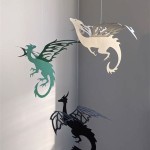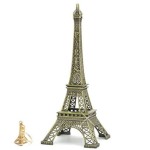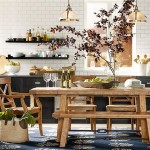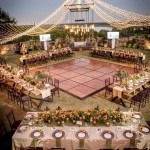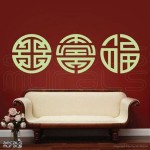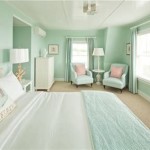Is Primitive Decor Out of Style in 2023?
The cyclical nature of interior design trends makes it challenging to definitively declare any style wholly "in" or "out." Primitive decor, with its focus on rustic simplicity, handmade items, and a connection to nature, is no exception. While stark minimalism and sleek modernism have dominated recent years, elements of primitive style continue to resonate with homeowners seeking warmth, authenticity, and a sense of history in their spaces.
Defining primitive decor requires acknowledging its diverse interpretations. Traditional primitive decor often features a muted color palette centered around earth tones, natural materials like wood and stone, and utilitarian objects repurposed for decorative use. It can evoke a sense of early American homesteads or colonial craftsmanship. Modern interpretations, however, might incorporate brighter accents, smoother finishes, and a more curated approach, blending rustic elements with contemporary sensibilities.
The rise of maximalism, a reaction against the starkness of minimalism, has created space for primitive decor to re-emerge. Maximalism embraces layering, texture, and a mix of styles, providing an ideal backdrop for incorporating primitive elements. A hand-hewn wooden bowl, a vintage quilt, or wrought iron accents can add character and depth to a maximalist space without feeling out of place.
The increasing emphasis on sustainability and eco-conscious design also contributes to the continued relevance of primitive decor. Its inherent focus on natural materials, handcrafted items, and repurposing aligns with these values. Choosing furniture made from reclaimed wood, incorporating antique textiles, and prioritizing locally sourced decor are all practices that resonate with both primitive aesthetics and sustainable living.
Furthermore, the desire for personalized and unique interiors has fueled a resurgence of interest in handcrafted and vintage items, cornerstones of primitive decor. Mass-produced furniture and decor can lack the individuality and character that many homeowners seek. Primitive decor, with its emphasis on one-of-a-kind pieces and handcrafted details, offers an opportunity to create a space that reflects personal taste and tells a story.
However, it’s crucial to approach primitive decor thoughtfully in 2023. Simply replicating a historical aesthetic can result in a space that feels dated or overly themed. The key lies in incorporating primitive elements in a fresh and contemporary way. This might involve pairing rustic textures with modern furniture, using a restrained color palette to avoid visual clutter, or focusing on a few key primitive pieces rather than overwhelming the space.
The current design landscape emphasizes the importance of creating spaces that feel authentic and personal. While the purely historical interpretation of primitive decor might not be trending in 2023, its core principles – simplicity, natural materials, and handcrafted charm – continue to resonate. By incorporating these elements in a thoughtful and balanced way, homeowners can create spaces that are both stylish and reflective of their individual aesthetic.
The influence of Scandinavian design, known for its clean lines, natural light, and emphasis on functionality, offers another avenue for integrating primitive elements into contemporary spaces. The shared appreciation for natural materials and craftsmanship makes the two styles surprisingly compatible. A rustic wooden stool, a woven textile, or a simple ceramic vase can complement the minimalist aesthetic of Scandinavian design while adding a touch of warmth and texture.
The evolving definition of "primitive decor" itself also contributes to its enduring appeal. Contemporary interpretations often incorporate elements from other design styles, such as bohemian, farmhouse, and even industrial, resulting in a more eclectic and personalized look. This adaptability allows primitive decor to remain relevant and evolve alongside changing design trends.
Finally, the enduring human connection to nature plays a significant role in the continued appreciation for primitive decor. In an increasingly digital and technologically driven world, the desire to incorporate natural elements into our homes has become even more pronounced. The use of natural materials, organic textures, and earthy color palettes in primitive decor creates a sense of grounding and connection to the natural world, fostering a calming and inviting atmosphere.
Ultimately, the question of whether primitive decor is "out of style" becomes less relevant than whether it aligns with individual preferences and contributes to a cohesive and welcoming space. By understanding the evolving nature of the style and incorporating its core principles thoughtfully, homeowners can create interiors that are both timeless and reflective of their unique personalities.
20 Interior Design Trends 2025 Must Have Looks You Ll Love Decorilla
Interior Design Trends 2025 5 Looks That Will Define The Year Architectural Digest
Check Out These 20 Interior Design Trends For 2025 Inspirations Essential Home
The 8 Biggest Color Trends For 2025 According To Experts
20 Interior Design Trends 2025 Must Have Looks You Ll Love Decorilla
20 Interior Design Trends 2025 Must Have Looks You Ll Love Decorilla
20 Interior Design Trends 2025 Must Have Looks You Ll Love Decorilla
20 Interior Design Trends 2025 Must Have Looks You Ll Love Decorilla
Check Out These 20 Interior Design Trends For 2025 Inspirations Essential Home
Check Out These 20 Interior Design Trends For 2025 Inspirations Essential Home
